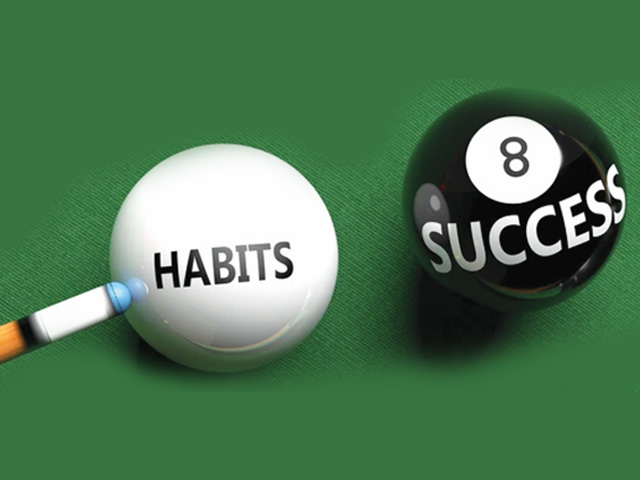Mrs.DEVI VENUGOPAL
 EDUCATIONAL PSYCHOLOGIST – 27
EDUCATIONAL PSYCHOLOGIST – 27
INDONESIA
we will discuss the 1st law of the Atomic Habits, Make it Obvious. Have you ever noticed, that an expert or experienced person in a particular field will identify the root cause with ease, it is known as an instinct. A doctor knows that by the look on the face, it is critical, a museum curator knows the difference between authentic piece and an expertly produced counterfeit. Even hairdressers, knows if the client is pregnant by the touch of their hair.
Our brain is a predicting machine, it notices what is important, sorting through the details and highlighting the relevant cues for future use. The brain encodes the lesson what we learned, though we can’t explain what we are learning, but learning is happening all the time. Your ability to notice the relevant cues in a given situation is the basis of every habit you have.
Think of the basic survival need – hunger, your body knows when you are hungry and it gives cues, it is governed unconsciously. Cravings can happen due to hormones and chemicals in our body, all of a sudden you feel the need to eat, you don’t know which tipped it off.
Similarly, one of the most surprising insights of our habits: you don’t need to be conscious of the cue for a habit to begin. You can notice an opportunity and take action without giving notice to it. This makes them a double sided sword. You can give in to your bad habits too quickly. Unless someone points to you, you are completely unaware of, you may not even notice that you apologize before asking a question, finishing other people sentences, responding first in a group chat even if the question is pointed towards someone else, checking your messages every 30 seconds and so on….
Over time, the cues that trigger our habits become so common it become invisible – the snack on the kitchen counter, remote on the couch, phone in our pocket. Our responses for the cues are deeply encoded that it may feel like the urge comes from nowhere. Henceforth, we need to start the process of behavioral change through awareness.
Before we start with a new one, get hold of the existing ones. This is more challenging as it is nonconscious and automatic. As Carl Jung, a famous Psychologist said, “Until you make the inconscious conscious, it will direct your life and you will call it fate.” If a habit remains mindless, you can’t expect to improve it.
The Habits Scorecard
The Japanese railway system is one of the best in the world. They follow a Pointing and Calling system. As each operator runs the train, they follow a ritual of pointing out at different objects and calling out commands. When train approaches a signal, the operator points at the signal and say, “Signal is green.” Out on the platform, other employees are performing the same task, pointing to the edge of the platform and declare, “All Clear!” This process is a safety system in place to reduce the mistakes, Pointing and Calling reduces errors by up to 85% and cuts accidents by 30%. The MTA subway in New York adopted a modified version of this “point-only,” and within two years of implementation, incidents of incorrectly berthed subways fell 57%.”
Pointing and Calling is so effective as it shifts the gear from automatic to consciousness. Many of us has the habit of talking out loud when we leave the house, to check whether we have picked up the car keys, house keys, water bottle, switched off the lights and gas, got the kids and the husband, ready to go. Many failures in performance are due to lack of self-awareness.
One of our greatest challenges in changing habits is maintaining the awareness of what we are doing, this is the reason why bad habits sneak back. We need to have “Point and Call” system in our personal lives, this is the origin of Habits Scorecard, which is a simple exercise you can use to be aware of your behavior. To make your own list your habits.
Here is an example –
- Wake up
- Snooze
- Check your phone
- Toilet
- Brush your teeth
- Floss your teeth
- Shower
- Wear deodorant
- Hang up the towel
- Get dressed
- Make breakfast and coffee and so on
Once you make your full list, ask yourself, “Is this a good or a bad or a neutral one?”, Write “+” next to a good one, write ‘‘-’’ to a bad one, write “=” to a neutral one, it will look like the one below:
- Wake up =
- Snooze –
- Check your phone –
- Toilet =
- Brush your teeth +
- Floss your teeth +
- Shower +
- Wear deodorant +
- Hang up the towel =
- Get dressed =
- Make breakfast and coffee +
The marks you give to the habit depends on your situation and goals. For someone who is trying to loose weight, eating a cookie every day is a bad habit, on the other hand you want to put on some weight it is neutral to eat a cookie. Scoring a habit can be tricky as the labels “good and bad habits” are slightly inaccurate. All habits serve us in some way, which is why we repeat them. For this exercise categorize how your habits will affect you in the long run. In general, good habits will have net positive outcomes and bad habits will have a net negative outcome. Smoking a cigarette will reduce the stress now, but in long term it’s not healthy.
If you still have doubts in how to rate your habits, just ask the below question, “Does this behavior help me become the type of person I wish to be?” “Does this behavior take me closer to the desired identity?” Habits that reinforce your desired identity are generally good.
Initially, don’t change anything, just observe without internal criticism and judgment. Don’t blame yourself for your faults, don’t praise yourself for your successes. If you are bing eating, just absorb that you are taking more calories than needed. If you waste your time online, notice that you are spending your life that you don’t want to. The first step to change any habit is to be on constant lookout for them, try the point and call method. If you see yourself grabbing another cookie, let out loud, that “I don’t need the cookie, it will cause me to gain weight and hurt my health.” Hearing them aloud, makes the consequences to be more real. It adds to action rather than mindlessly slipping to your old ways. The process of behavior change starts with awareness to the cues and acknowledge them, so it makes it possible to respond to them in a way that benefits you.






